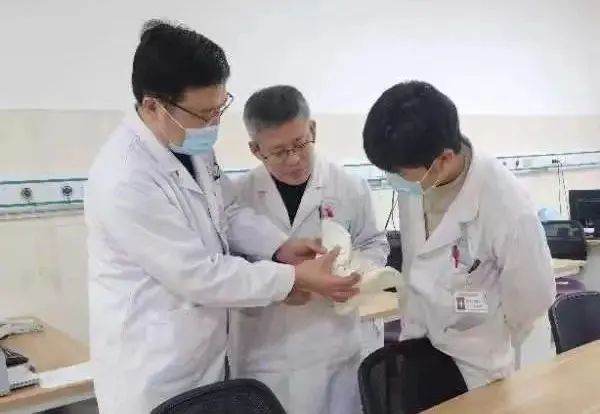Technological breakthrough] 3D printing realizes orthopaedic surgery "foresight" --Liaocheng Second Hospital Orthopaedic Surgery Department applies 3D printing technology into orthopaedic surgery
Percutaneous minimally invasive sacroiliac screw placement is still a representative operation of minimally invasive surgery in trauma orthopaedics, and its emergence has introduced the treatment of pelvic ring injury into the minimally invasive era. Due to the special anatomical characteristics of the pelvis, how to accurately and safely place the screws is still challenging for clinicians, the application of 3D printing technology in orthopedics is a more cutting-edge treatment in recent years, and the Department of Orthopedic Surgery of Huamei Hospital has successfully carried out the application of 3D printing guides for the placement of sacroiliac screws, which marks a new high level in the field of minimally invasive treatment of pelvic fracture in our hospital.

60-year-old Sun Da Niang (a pseudonym) was admitted to the hospital with an anterior pelvic fracture due to a fall, the patient had a strong desire for surgery, in view of the patient's age and comorbidities, it was decided to give the patient percutaneous minimally invasive sacroiliac screw fixation by applying the 3D printing guide plate technology after discussion in the department, before the operation, the patient was given thin-layer CT scanning, the patient's pelvic model was printed and a nailing guide plate was set. Under the guidance of Director Liu Deqiang, the treatment team of Du Fangtao, Fang Jifeng, and Gu Chuanwei, combined with the patient's preoperative imaging data, accurately planned the nail insertion point and angle, and under the guidance of the nail insertion guide plate, the C-arm multi-angle fluoroscopy was carried out during the operation to verify that the screws were located in the safety zone, and the screws were successfully inserted, with an intraoperative bleed of about 10 mL. Currently, the patient is recovering satisfactorily under the careful care of Zhang Laimin, Lu Xiu'e, head nurse, and Huang Chunxia, full-time nurse.
According to Dr. Du Fangtao, minimally invasive fixation of anterior and posterior pelvic ring fractures is the most commonly used treatment for this type of injury, but due to the complex anatomical relationship of the pelvis, once the screws injure the nerves, blood vessels and other complications, the consequences will be disastrous. Therefore, the key point of this surgery lies in the deep understanding of the anatomy of the pelvis, combined with thin-layer CT scanning, software simulation of nail placement, personalized printing of the patient's pelvic model and nail guide plate, fine operation during the operation, the use of the guide plate to determine the direction of screws, and repeated verification of the C-arm, in order to achieve the ideal therapeutic effect.
The success of the surgery has raised our trauma treatment to a new level.
(Contributed by: Department of Orthopedic Surgery, Huamei Campus)




 鲁ICP备11009722号-4
鲁ICP备11009722号-4 